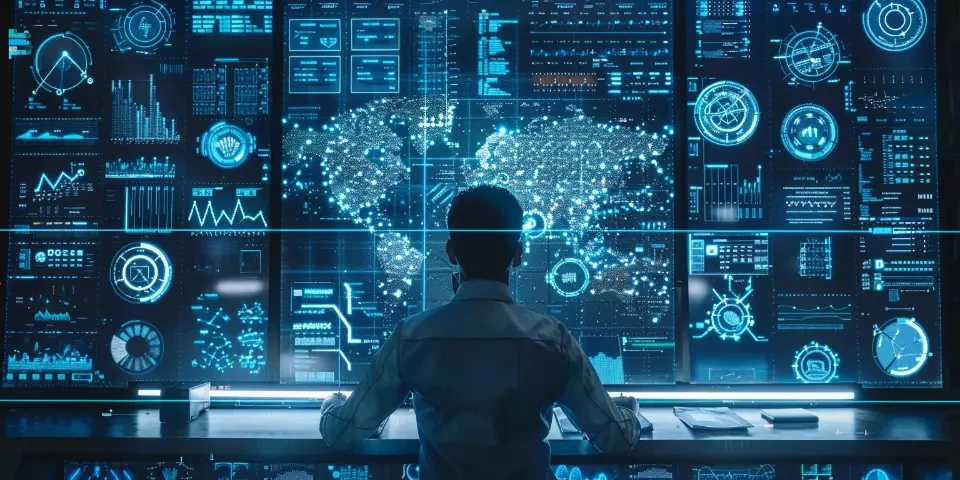Unveiling the Secrets Behind AI-Powered Virtual Makeup Try-On
In recent years, the beauty industry has witnessed a significant technological revolution with the introduction of AI-powered virtual makeup try-on technology. This groundbreaking innovation allows users to virtually try on makeup products before making a purchase, revolutionizing the way we shop for cosmetics. In this article, we will delve into the secrets behind this technology and explore its profound impact on the beauty industry.
1. The Power of Artificial Intelligence
At the core of AI-powered virtual makeup try-on technology lies artificial intelligence, a field of computer science that enables machines to simulate and mimic human intelligence and behavior. By leveraging AI algorithms, virtual makeup try-on solutions are capable of accurately analyzing facial features, skin tone, and texture to provide a hyper-realistic virtual makeup experience.

Thanks to the power of AI, virtual makeup try-on tools can accurately detect facial landmarks and precisely overlay makeup products onto the user's face, creating a seamless and lifelike appearance.
2. Facial Recognition and Tracking
In order to provide an accurate virtual makeup try-on experience, facial recognition and tracking technologies play a vital role. These technologies enable the software to identify and track the user's facial features in real-time, ensuring precise alignment and placement of virtual makeup products.
Facial recognition algorithms analyze various facial attributes, such as the shape of the face, eyes, lips, and skin texture, to determine the most suitable makeup products. Tracking algorithms continuously adjust the virtual makeup in response to facial movements, providing a dynamic and interactive try-on experience.
3. Virtual Reality Integration
Augmented reality (AR) and virtual reality (VR) technologies are often integrated into AI-powered virtual makeup try-on solutions to enhance the user experience. By using VR devices or AR-enabled smartphones, users can see themselves wearing virtual makeup in real-time, creating a more immersive and realistic try-on experience.
VR integration allows users to virtually try on makeup in a 3D simulated environment, providing a more accurate representation of how the makeup would look in different lighting and angles. This technology has revolutionized the way consumers experience and interact with makeup products, minimizing the need for physical try-ons and samples.
4. Expanding Product Variety
One of the key advantages of AI-powered virtual makeup try-on is the ability to virtually try on a wide range of makeup products from different brands. The technology enables users to explore and experiment with an extensive catalog of makeup shades, finishes, and styles without physically applying multiple products.
Virtual makeup try-on solutions often collaborate with various cosmetics brands, providing access to their product libraries and recommendations. This allows users to confidently select the most suitable products based on their preferences, skin tone, and even occasion.
5. Personalized Recommendations
A remarkable aspect of AI-powered virtual makeup try-on is its ability to provide personalized recommendations. By analyzing user preferences, facial features, and skin tone, the technology can suggest the most suitable shades, products, and makeup styles that complement their individual characteristics.
Moreover, virtual makeup try-on tools often consider factors such as the user's age, desired intensity, and occasion to offer tailored suggestions. This personalized approach enhances the overall shopping experience and ensures customer satisfaction.
6. Interactive and Shareable Experience
AI-powered virtual makeup try-on tools not only provide a personalized experience but also offer an interactive and shareable platform for users. These tools allow users to experiment with different makeup looks, swap between products, and compare various styles with just a few clicks.
The ease of use and quick virtual transformations make it enjoyable for users to explore different makeup trends and experiment with their appearance. Additionally, many virtual makeup try-on applications provide social media integration, enabling users to share their virtual makeovers with friends and seek feedback.
7. Challenges and Limitations
While AI-powered virtual makeup try-on technology has revolutionized the beauty industry, it does come with its own set of challenges and limitations. Some of these include:
- Color accuracy: Due to variations in screen color reproduction, there may be slight discrepancies in how the virtual makeup appears compared to its physical counterpart.
- Texture simulation: The technology is continually improving, but currently, virtual makeup may not perfectly replicate the texture and feel of real products.
- Complex makeup techniques: Virtual try-on tools may struggle with accurately simulating complex makeup techniques, such as intricate eye shadow patterns or contouring.
Frequently Asked Questions:
Q: How accurate are AI-powered virtual makeup try-on tools?
A: AI-powered virtual makeup try-on tools have significantly improved in accuracy over the years. However, slight variations in color and texture may exist due to screen limitations.
Q: Can I use virtual makeup try-on tools on my smartphone?
A: Yes, many virtual makeup try-on applications are available on smartphones. These tools utilize AR technology to overlay virtual makeup onto your face in real-time.
Q: Can virtual makeup try-on tools match my skin tone accurately?
A: Virtual makeup try-on tools employ AI algorithms to analyze your skin tone and recommend suitable shades. While they strive for accuracy, it is advisable to consider physical swatches or samples for final color selection.
References:
1. Smith, J. (2020). The rise of AI in beauty: How virtual try-on tools are getting more accurate. Retrieved from [insert source URL].
2. White, S. (2019). Virtual reality meets makeover: How the beauty industry benefits from AR. Retrieved from [insert source URL].
3. Johnson, L. (2021). The power of AI in virtual makeup try-on. Retrieved from [insert source URL].
Explore your companion in WeMate